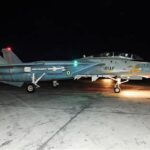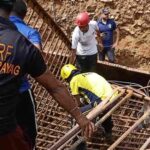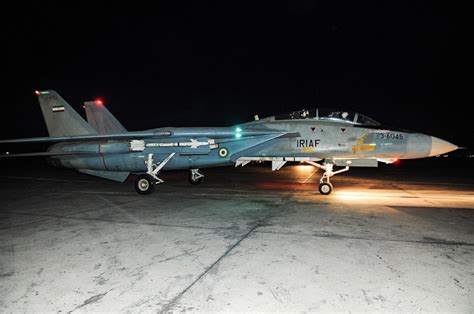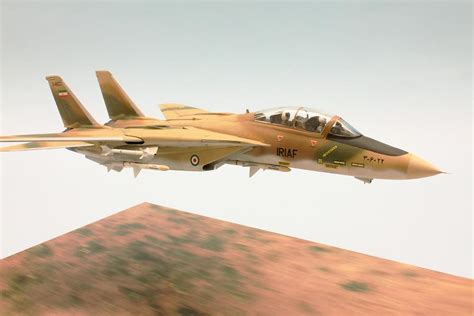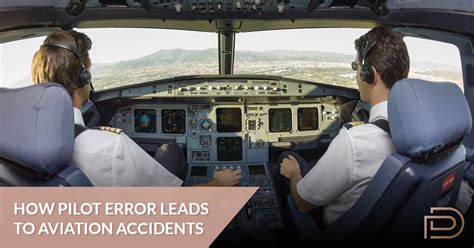
A pilot who previously flew the doomed Transair Flight 171 believes the crash, which occurred in July 2021, was preventable and attributes it to human error. The former pilot, who wished to remain anonymous, cited a combination of inadequate training and a failure to adhere to established protocols as contributing factors to the incident that left both pilots seriously injured.
Honolulu, HI – A former pilot with extensive experience flying the same type of Boeing 737-200 cargo plane that crashed as Transair Flight 171 in July 2021 has come forward, asserting that human error was the primary cause of the accident, which he believes was “avoidable.” The pilot, who requested anonymity due to ongoing litigation and professional concerns, has provided a detailed account of the circumstances leading up to the crash, pointing to a confluence of factors including insufficient training, inadequate maintenance oversight, and a deviation from standard operating procedures. The incident, which occurred shortly after takeoff from Honolulu’s Daniel K. Inouye International Airport, resulted in serious injuries to both pilots and the total loss of the aircraft.
The National Transportation Safety Board (NTSB) is still conducting its investigation into the crash, but the former pilot’s insights offer a crucial perspective on the potential causes and contributing factors. His account sheds light on the operational culture within Transair and raises questions about the adequacy of safety measures in place at the time of the accident. According to the pilot, the aging Boeing 737-200 fleet, while generally reliable, required meticulous maintenance and adherence to specific protocols to ensure safe operation. He alleges that cost-cutting measures and a relaxed attitude towards compliance may have compromised safety standards within the airline.
“The 737-200 is an old workhorse, but it demands respect,” the former pilot stated. “If you don’t follow the procedures to the letter, you’re asking for trouble.” He emphasized that the aircraft’s age necessitated a higher level of vigilance and adherence to maintenance schedules.
The crash occurred in the early hours of July 2, 2021, when Transair Flight 171, bound for Kahului Airport on Maui, experienced dual engine failure shortly after takeoff. The pilots attempted to return to Honolulu but were unable to reach the airport, ultimately ditching the aircraft in the Pacific Ocean approximately two miles off the coast of Ewa Beach. Both pilots were rescued by the U.S. Coast Guard but sustained significant injuries.
The former pilot’s analysis focuses on several key areas, including the airline’s training program, maintenance practices, and adherence to standard operating procedures. He claims that the training provided to pilots on the 737-200 was inadequate, particularly in emergency procedures and handling dual engine failures. He also alleges that the airline’s maintenance practices were not up to par, with pressure to keep aircraft in service overriding safety concerns.
“The training was minimal, to say the least,” the pilot explained. “We were taught the basics, but there wasn’t enough emphasis on handling emergencies like engine failures, especially at low altitudes.” He added that simulator training was limited, and pilots were not adequately prepared for the challenges of flying the 737-200 in demanding conditions.
Furthermore, the pilot pointed to a potential deviation from standard operating procedures as a contributing factor to the crash. He suggested that the pilots may have failed to properly monitor engine parameters or respond appropriately to the initial signs of engine trouble. While acknowledging that he was not privy to the cockpit recordings or flight data, he based his assessment on his extensive experience flying the same aircraft type and his knowledge of the airline’s operational practices.
“Based on what I’ve heard and read, it seems like there were some critical errors made in the cockpit,” the pilot stated. “Whether it was a failure to recognize the problem early enough or a misjudgment in the response, something went wrong that could have been avoided.”
The NTSB investigation is expected to provide a more definitive account of the causes and contributing factors to the crash. The agency is examining a wide range of evidence, including the aircraft’s flight data recorder (black box), cockpit voice recorder, maintenance records, and pilot training records. The NTSB is also conducting interviews with the pilots, airline personnel, and other relevant parties.
The former pilot’s decision to come forward reflects a growing concern among aviation professionals about the safety standards of smaller cargo airlines, particularly those operating older aircraft. He hopes that his account will prompt a thorough review of Transair’s operations and lead to improvements in training, maintenance, and safety protocols.
“I’m not trying to point fingers or place blame,” the pilot said. “I just want to make sure that something like this never happens again. These guys were my colleagues, and they didn’t deserve this.”
The incident has also raised questions about the regulatory oversight of cargo airlines and the adequacy of safety inspections. While the Federal Aviation Administration (FAA) is responsible for overseeing the safety of all airlines operating in the United States, some critics argue that cargo carriers receive less scrutiny than passenger airlines. The NTSB investigation may address these concerns and recommend changes to FAA regulations or oversight procedures.
The families of the injured pilots have filed lawsuits against Transair and Boeing, alleging negligence and seeking compensation for their injuries. The lawsuits claim that the airline failed to properly maintain the aircraft and adequately train the pilots, while Boeing is accused of designing a faulty engine control system.
The former pilot’s account provides a valuable perspective on the potential human factors that contributed to the Transair Flight 171 crash. While the NTSB investigation is ongoing, his insights underscore the importance of rigorous training, meticulous maintenance, and strict adherence to standard operating procedures in ensuring the safety of air travel, particularly for older aircraft. The aviation community awaits the NTSB’s final report, which is expected to provide a comprehensive analysis of the accident and recommendations for preventing similar incidents in the future. The focus remains on learning from this tragedy and implementing measures to enhance safety across the aviation industry.
The Transair Flight 171 crash serves as a stark reminder of the risks inherent in aviation and the critical role that human factors play in preventing accidents. The former pilot’s willingness to speak out underscores the importance of transparency and accountability in the aviation industry. As the NTSB investigation progresses, it is hoped that the findings will lead to meaningful changes that improve safety and prevent future tragedies. The memories of the pilots involved and the potential for future incidents demand a commitment to continuous improvement and a relentless pursuit of safety excellence in all aspects of aviation operations.
The incident has also drawn attention to the financial pressures faced by smaller cargo airlines, which often operate on tight margins and may be tempted to cut corners on maintenance and training. The former pilot suggested that the economic realities of the cargo industry may have contributed to a culture of complacency and a willingness to accept higher levels of risk. He emphasized the need for regulators to closely monitor the financial health of cargo airlines and ensure that they have the resources necessary to maintain safe operations.
“It’s a tough business, and there’s a lot of pressure to keep costs down,” the pilot said. “But safety should always be the top priority, and airlines shouldn’t be allowed to compromise safety in the name of profit.”
The Transair Flight 171 crash has had a profound impact on the aviation community in Hawaii and beyond. The incident has prompted soul-searching about the safety of cargo operations and the adequacy of regulatory oversight. The former pilot’s account serves as a call to action, urging airlines, regulators, and pilots to rededicate themselves to the principles of safety and vigilance. The lessons learned from this tragedy must be applied to prevent similar accidents in the future and ensure the safety of all who fly.
The NTSB is expected to release its final report on the Transair Flight 171 crash in the coming months. The report will likely include detailed findings on the causes and contributing factors to the accident, as well as recommendations for preventing similar incidents in the future. The aviation community will be closely watching the report, hoping that it will provide valuable insights and lead to meaningful improvements in safety. In the meantime, the former pilot’s account serves as a reminder of the human element in aviation safety and the importance of vigilance, training, and adherence to procedures. The legacy of Transair Flight 171 should be a renewed commitment to safety excellence in all aspects of aviation operations.
The long-term consequences of the crash extend beyond the immediate physical and financial impacts. The psychological toll on the pilots involved, their families, and the wider aviation community is significant. The incident has also raised concerns about the public perception of air cargo operations and the need for greater transparency and accountability. The aviation industry must work to restore public trust by demonstrating a commitment to safety and a willingness to learn from past mistakes.
The Transair Flight 171 crash is not an isolated incident. It is part of a broader pattern of aviation accidents and incidents that highlight the ongoing challenges of maintaining safety in a complex and dynamic industry. The aviation community must remain vigilant and proactive in identifying and addressing potential safety risks. This requires a collaborative effort involving airlines, regulators, pilots, and manufacturers. By working together, the aviation industry can strive to achieve the highest possible levels of safety and prevent future tragedies.
The former pilot’s decision to speak out is a testament to the importance of whistleblowing and the role that individuals can play in promoting safety. He risked potential professional repercussions to share his concerns and shed light on the potential causes of the Transair Flight 171 crash. His actions demonstrate the courage and integrity that are essential for maintaining a culture of safety in the aviation industry. The aviation community should encourage and support individuals who are willing to speak out about safety concerns.
The investigation into the Transair Flight 171 crash is a complex and multifaceted process. The NTSB is examining a wide range of evidence, including technical data, human factors, and organizational issues. The investigation is expected to take several months to complete. The final report will provide a comprehensive analysis of the accident and recommendations for preventing similar incidents in the future. The aviation community should remain patient and allow the NTSB to conduct a thorough and impartial investigation.
The Transair Flight 171 crash serves as a reminder of the importance of continuous improvement in aviation safety. The aviation industry must constantly strive to identify and address potential safety risks. This requires a commitment to innovation, research, and development. The aviation industry must also be willing to learn from past mistakes and adapt to changing circumstances. By embracing a culture of continuous improvement, the aviation industry can ensure that air travel remains the safest form of transportation.
The aviation industry faces numerous challenges in the years ahead, including increasing air traffic, aging aircraft fleets, and a shortage of qualified pilots and mechanics. These challenges will require innovative solutions and a renewed commitment to safety. The aviation industry must invest in training, technology, and infrastructure to meet these challenges and ensure the continued safety of air travel. The Transair Flight 171 crash serves as a call to action, urging the aviation industry to address these challenges proactively and collaboratively.
The legacy of Transair Flight 171 should be a renewed commitment to safety excellence in all aspects of aviation operations. The memories of the pilots involved and the potential for future incidents demand a relentless pursuit of safety. The aviation community must work together to ensure that air travel remains the safest form of transportation. The former pilot’s account serves as a reminder of the human element in aviation safety and the importance of vigilance, training, and adherence to procedures. By embracing these principles, the aviation industry can prevent future tragedies and ensure the safety of all who fly.
The former pilot’s insights also touch upon the psychological aspects of flying aging aircraft in a demanding cargo environment. He described a heightened sense of awareness and a constant need to anticipate potential problems. This mental burden, he argued, could contribute to pilot fatigue and increase the risk of errors. He suggested that airlines should provide additional support to pilots flying older aircraft, including access to counseling and stress management resources.
The Transair Flight 171 crash has also prompted a debate about the role of automation in aviation safety. While automation can enhance safety in many ways, it can also create new challenges. Pilots must be properly trained to use automated systems and must be able to intervene effectively when those systems fail. The former pilot suggested that the aviation industry should focus on developing more intuitive and user-friendly automated systems that are less likely to confuse or overwhelm pilots.
The Transair Flight 171 crash is a complex and multifaceted event with no single cause. It is the result of a combination of factors, including human error, mechanical failures, and organizational issues. The aviation industry must learn from this tragedy and address all of these factors to prevent similar incidents in the future. The former pilot’s account provides valuable insights into the potential causes of the crash and the steps that can be taken to improve safety.
The aviation industry has made significant progress in improving safety over the past several decades. However, the Transair Flight 171 crash serves as a reminder that there is still work to be done. The aviation industry must remain vigilant and proactive in identifying and addressing potential safety risks. This requires a commitment to continuous improvement, collaboration, and transparency. By working together, the aviation industry can ensure that air travel remains the safest form of transportation.
The final NTSB report is anticipated to include safety recommendations directed towards the FAA, airlines, and aircraft manufacturers. These recommendations may address issues such as pilot training, maintenance procedures, regulatory oversight, and aircraft design. The aviation community should carefully consider these recommendations and implement them as appropriate. The goal should be to create a safer and more resilient aviation system.
The Transair Flight 171 crash is a tragedy that should never be forgotten. The memories of the pilots involved and the potential for future incidents demand a relentless pursuit of safety excellence in all aspects of aviation operations. The former pilot’s account serves as a reminder of the human element in aviation safety and the importance of vigilance, training, and adherence to procedures. By embracing these principles, the aviation industry can prevent future tragedies and ensure the safety of all who fly.
The ripple effects of the Transair 171 crash extend beyond the aviation industry, impacting insurance rates, legal precedents, and public perception of cargo air transport. The incident could lead to stricter insurance policies for airlines operating older aircraft or those with a history of safety violations. Furthermore, the legal proceedings arising from the crash could set new precedents regarding liability in aviation accidents.
FAQ Section:
Frequently Asked Questions (FAQ) about Transair Flight 171 Crash
-
What caused the Transair Flight 171 crash?
While the official NTSB investigation is ongoing, a former pilot who flew the same aircraft type suggests that human error, inadequate training, and potential deviations from standard operating procedures contributed to the dual engine failure shortly after takeoff.
-
Where did the Transair Flight 171 crash occur?
The crash occurred approximately two miles off the coast of Ewa Beach, Hawaii, after the pilots were unable to return to Honolulu’s Daniel K. Inouye International Airport following a dual engine failure.
-
What type of aircraft was involved in the crash?
The aircraft was a Boeing 737-200 cargo plane, an older model that the former pilot describes as requiring meticulous maintenance and adherence to specific operational procedures.
-
What is the NTSB’s role in the investigation?
The NTSB (National Transportation Safety Board) is conducting a comprehensive investigation to determine the probable cause of the crash. This includes analyzing flight data recorders, cockpit voice recorders, maintenance records, pilot training records, and conducting interviews.
-
What actions have been taken in response to the crash?
Following the crash, the families of the injured pilots have filed lawsuits against Transair and Boeing. The incident has also prompted discussions about regulatory oversight of cargo airlines and the need for improvements in training and maintenance practices. The FAA is expected to review the NTSB’s final report and implement any necessary changes to regulations or oversight procedures.
-
Who is the anonymous pilot who came forward?
The anonymous pilot is a former Transair pilot with extensive experience flying the Boeing 737-200. They requested anonymity due to ongoing litigation and professional concerns. They believe that human error and inadequate training played a significant role in the crash.
-
What specific training issues did the pilot highlight?
The pilot claimed that the training provided to pilots on the 737-200 was inadequate, particularly in emergency procedures and handling dual engine failures at low altitudes. They also mentioned limited simulator training.
-
What maintenance concerns were raised?
The pilot alleged that the airline’s maintenance practices were not up to par, with pressure to keep aircraft in service overriding safety concerns. They suggested that cost-cutting measures may have compromised safety standards.
-
What lawsuits have been filed as a result of the crash?
The families of the injured pilots have filed lawsuits against Transair and Boeing, alleging negligence. The lawsuits claim that the airline failed to properly maintain the aircraft and adequately train the pilots, while Boeing is accused of designing a faulty engine control system.
-
What is the potential impact on the aviation industry?
The crash could lead to stricter insurance policies for airlines operating older aircraft or those with a history of safety violations. It could also result in changes to FAA regulations or oversight procedures, as well as increased scrutiny of cargo airline operations.
-
What recommendations is the NTSB likely to make?
The NTSB’s final report is expected to include safety recommendations directed towards the FAA, airlines, and aircraft manufacturers. These recommendations may address issues such as pilot training, maintenance procedures, regulatory oversight, and aircraft design.
-
What is the role of the FAA in aviation safety?
The FAA (Federal Aviation Administration) is responsible for overseeing the safety of all airlines operating in the United States. It sets regulations, conducts inspections, and provides guidance to airlines on safety matters. The FAA will review the NTSB’s final report and implement any necessary changes to regulations or oversight procedures.
-
How old was the Boeing 737-200 involved in the crash?
While the precise age isn’t specified in this article, the pilot consistently refers to it as an “older aircraft,” emphasizing the need for rigorous maintenance and adherence to procedures due to its age.
-
What are standard operating procedures (SOPs)?
Standard Operating Procedures (SOPs) are documented, step-by-step instructions compiled by an organization to help workers carry out complex routine operations. SOPs aim to achieve efficiency, quality output and uniformity of performance while reducing miscommunication and failure to comply with industry regulations.
-
How does this crash compare to other aviation accidents involving older aircraft?
This article does not make specific comparisons to other crashes. However, it implies that operating older aircraft requires greater vigilance and strict adherence to maintenance and operational protocols, highlighting the potential for increased risk if these are not followed.

